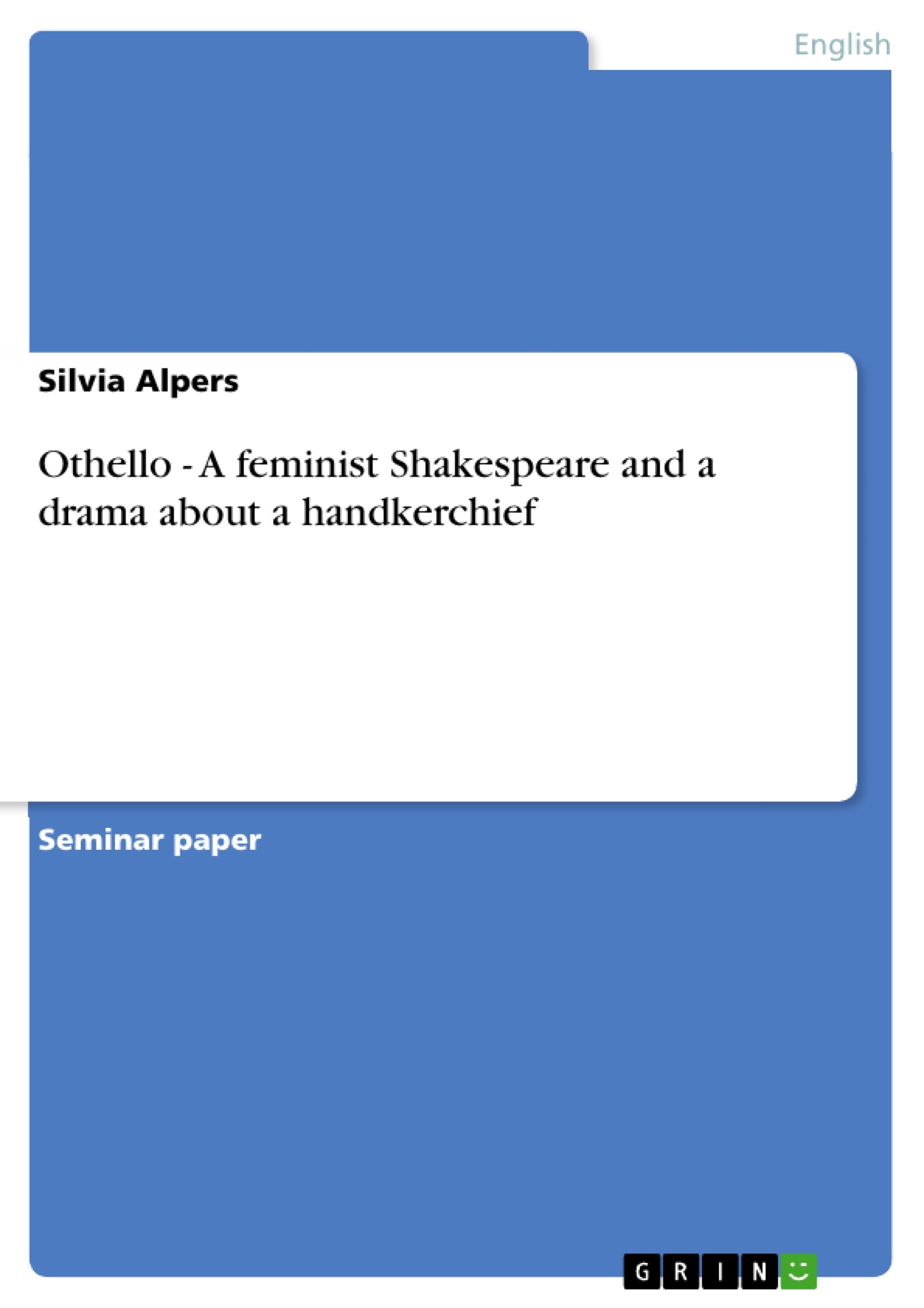This work deals with Shakespeare’s play Othello with regard to feminism. It will analyse the female characters and their relation to men and society. Furthermore it will try to find out if Shakespeare was a feminist or not, if he created feministic women and if he supported the idea of equal rights. Additionally, the paper will look at the handkerchief as a stage prop and as a symbol with a wider meaning. How did Shakespeare use its symbolism? First of all, this work will give a short overview over feminism, its definition, its historical development and its relation to Shakespeare. The following chapter deals with the play Othello in connection with feminism. Can Othello be interpreted from a feminist point of view? What symbols did Shakespeare use? Here the handkerchief is of special interest. Finally, the conclusion will summarize the findings and give results. In order to give a broad view of meanings and feministic reviews this paper works with secondary literature from 1775 to 2000 to show how opinions changed, respectively how they remained the same. Moreover it includes books about feminism in general and books about Shakespeare’s plays and feminism.
Table of Contents
- Introduction
- Feminism
- Definition of 'feminism'
- Feminism and literary criticism
- Feminism and Shakespeare
- Othello as a Feminist Play
- The handkerchief and its symbolism
- The handkerchief - not only a stage prop
- Feminism in Othello
- Conclusion
Objectives and Key Themes
This work examines Shakespeare's play Othello through the lens of feminism, analyzing the female characters and their interactions with men and society. It explores whether Shakespeare embraced feminist principles and created feminist women. The paper delves into the symbolism of the handkerchief, exploring its significance as a stage prop and as a broader symbol. The study aims to shed light on how Shakespeare utilized this symbolism.
- The portrayal of female characters in Othello
- Shakespeare's potential feminist perspectives
- The symbolism of the handkerchief in the play
- The historical evolution of feminist interpretations of Shakespeare
- The relationship between feminist literary criticism and the societal context
Chapter Summaries
- Introduction: The introduction outlines the paper's objectives, which include analyzing the female characters in Othello, exploring Shakespeare's potential feminist views, and examining the symbolism of the handkerchief. It also provides a brief overview of the paper's structure and approach.
- Feminism: This chapter defines feminism and provides a historical overview of feminist criticism. It explores the development of feminist thought and its relationship to Shakespeare.
- Othello as a Feminist Play: This chapter analyzes Othello through a feminist lens, examining the symbolism of the handkerchief and its broader implications. It explores the ways in which the play can be interpreted from a feminist perspective.
Keywords
This study focuses on feminism, Shakespeare's Othello, female characters, symbolism, the handkerchief, feminist literary criticism, gender roles, and power dynamics. It examines the historical development of feminist interpretations of Shakespeare and explores the relationship between feminist theory and literary analysis.
- Citar trabajo
- Magister Artium (M.A.) Silvia Alpers (Autor), 2004, Othello - A feminist Shakespeare and a drama about a handkerchief, Múnich, GRIN Verlag, https://www.grin.com/document/29873



